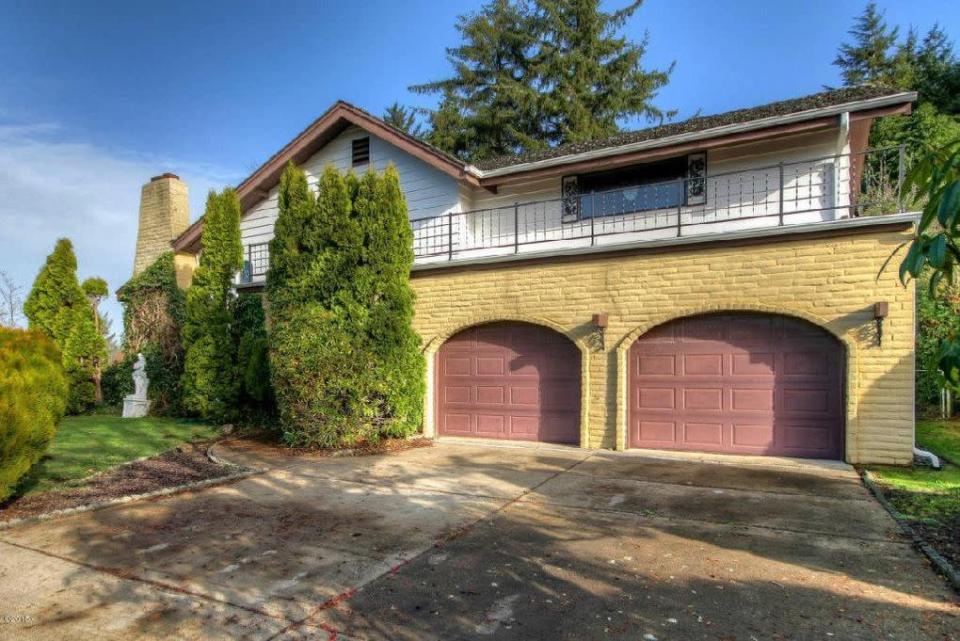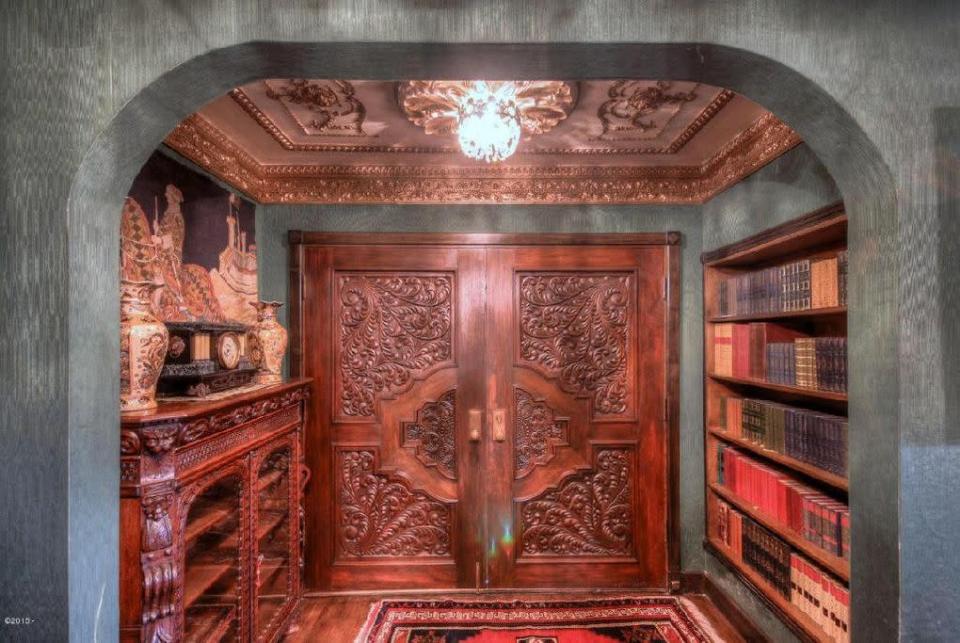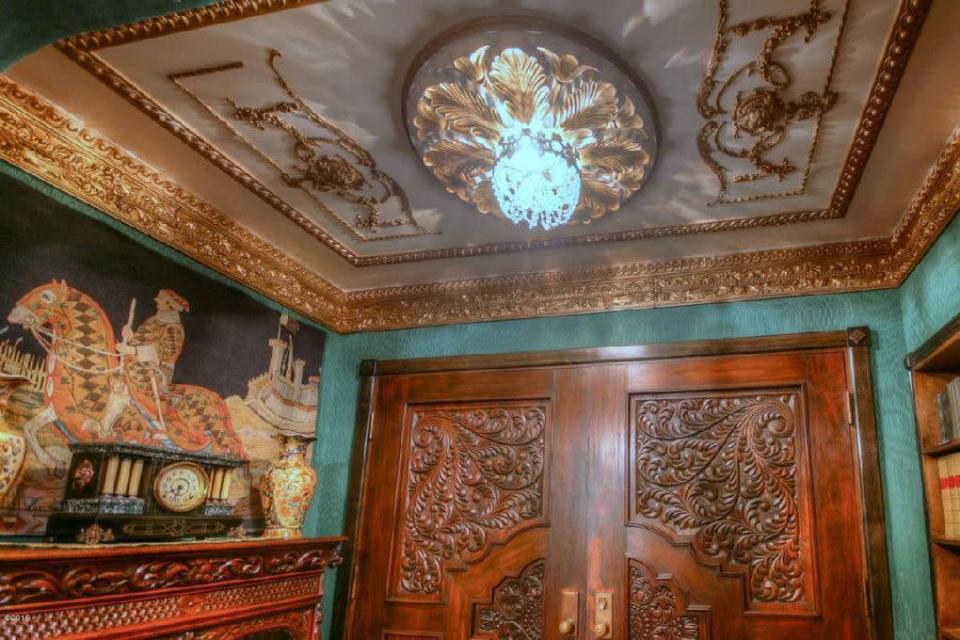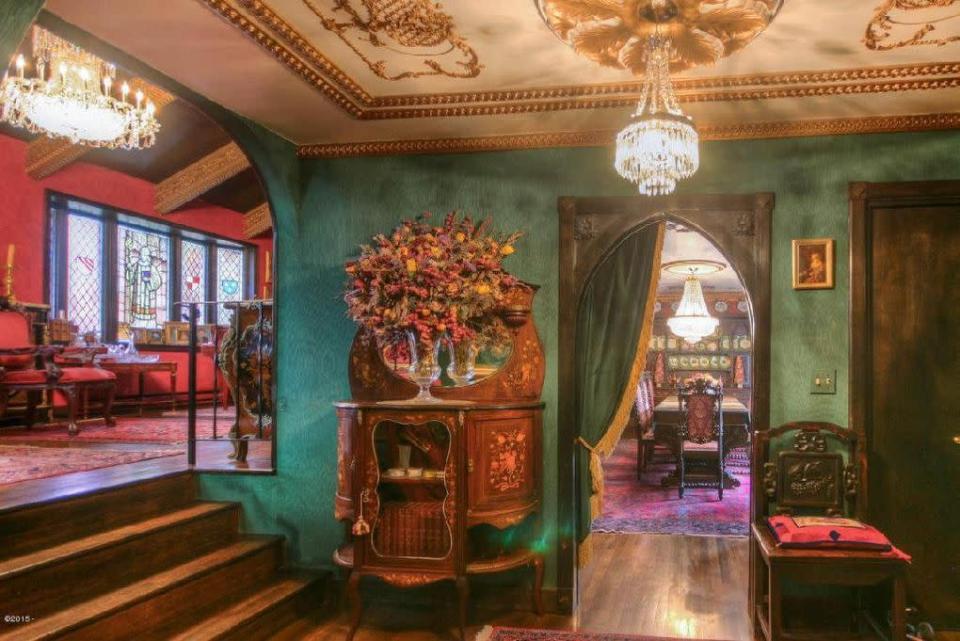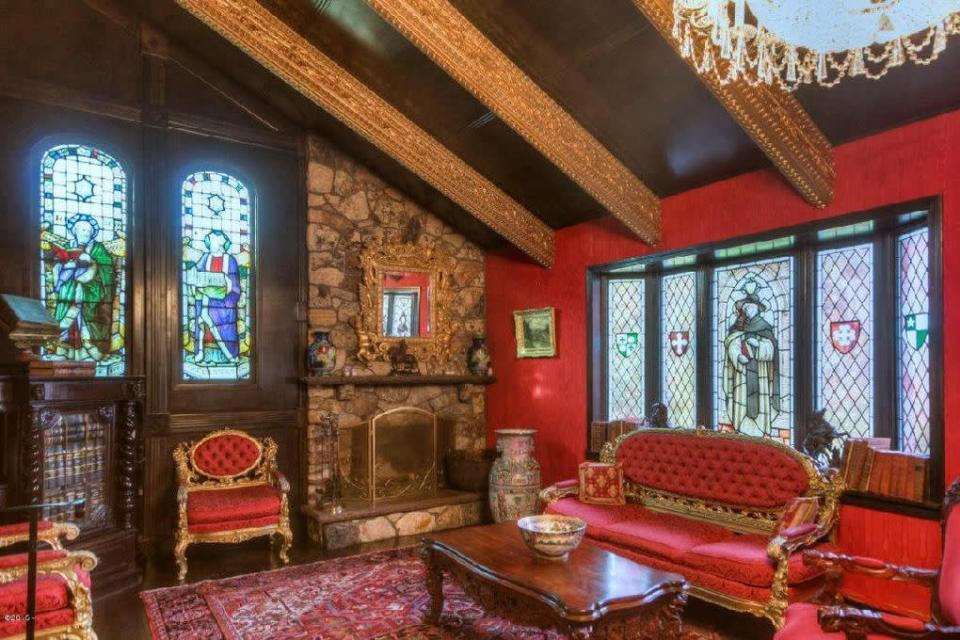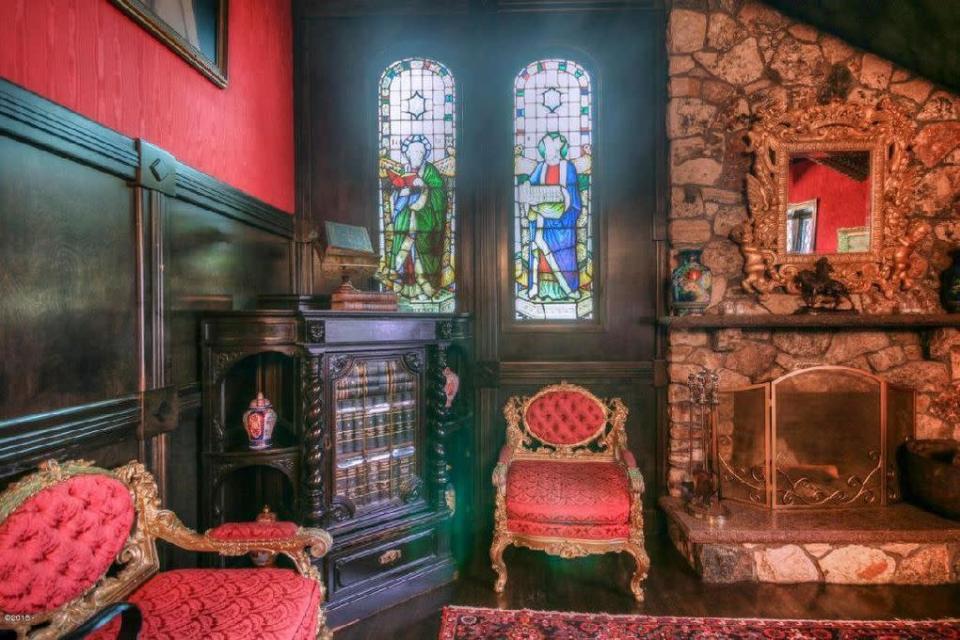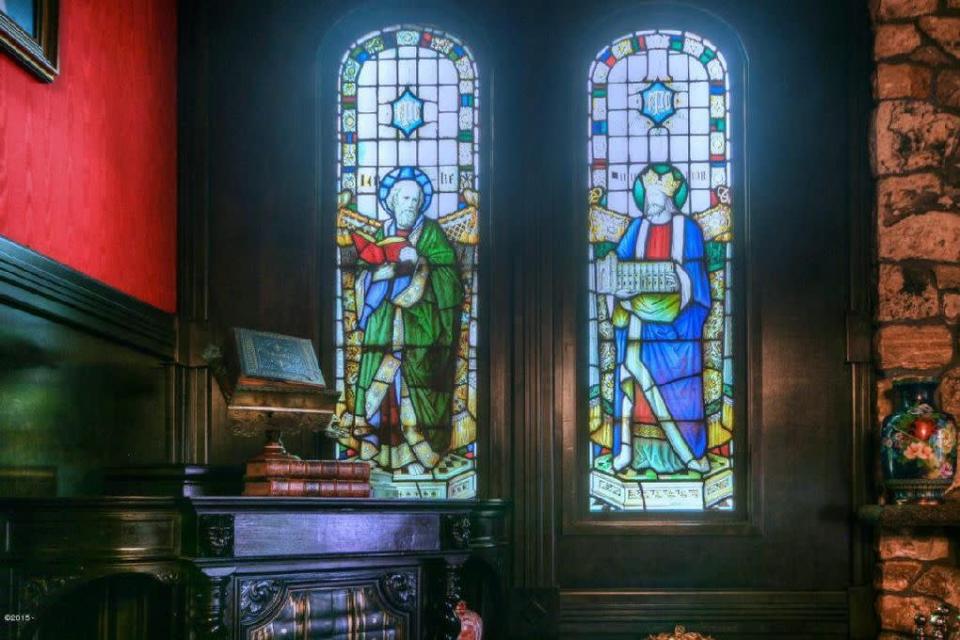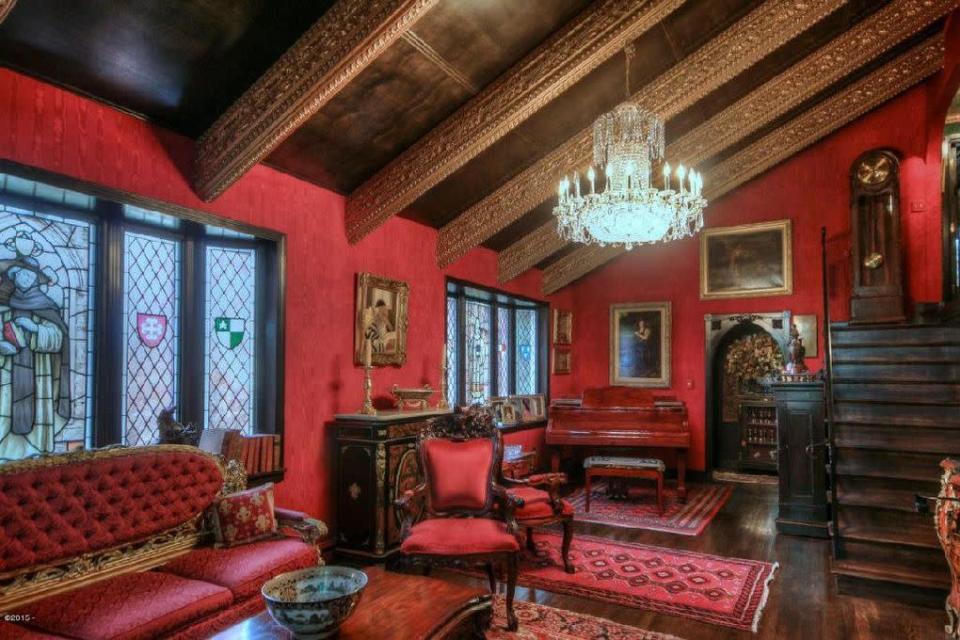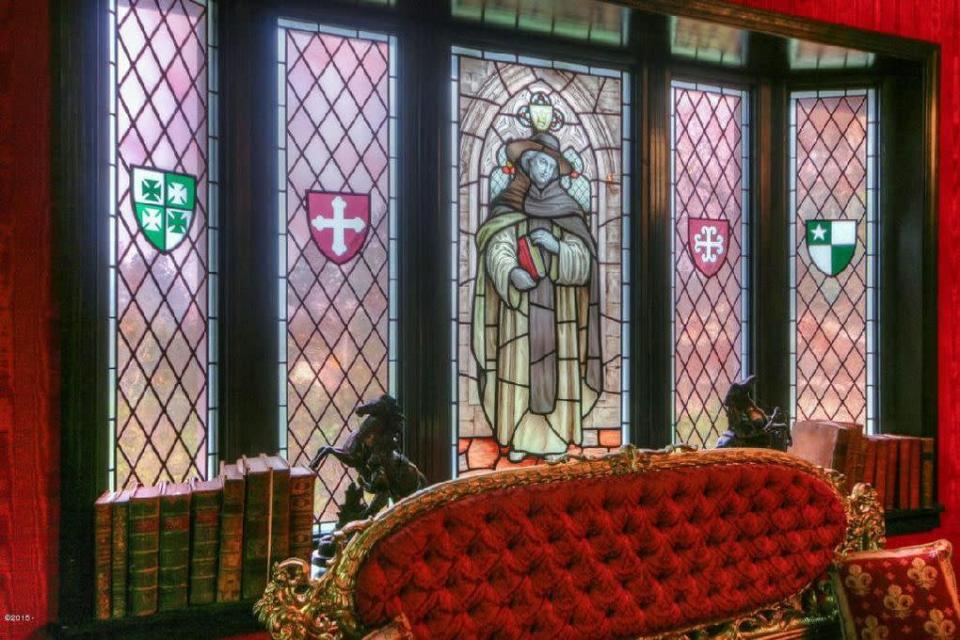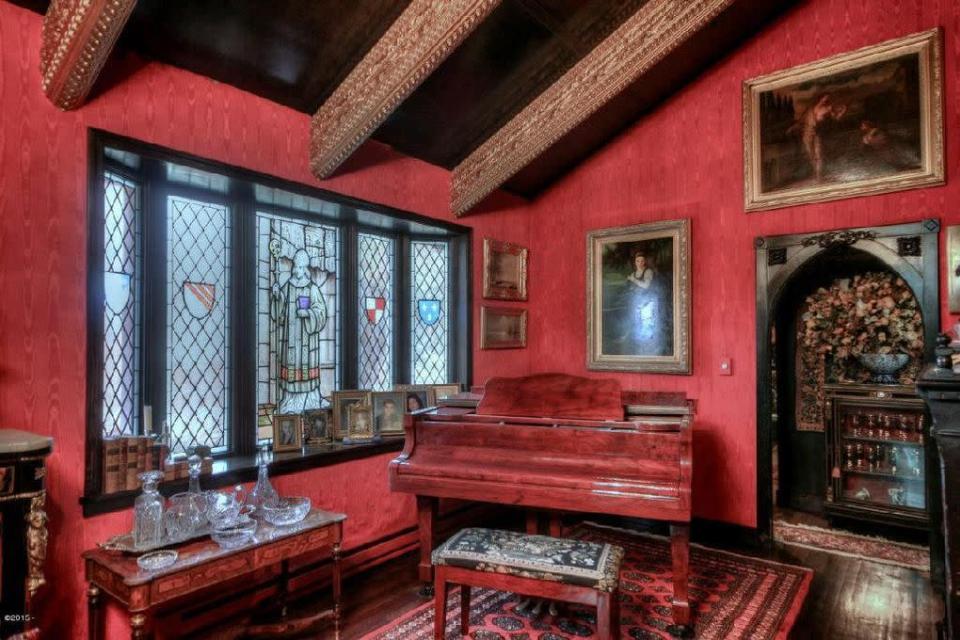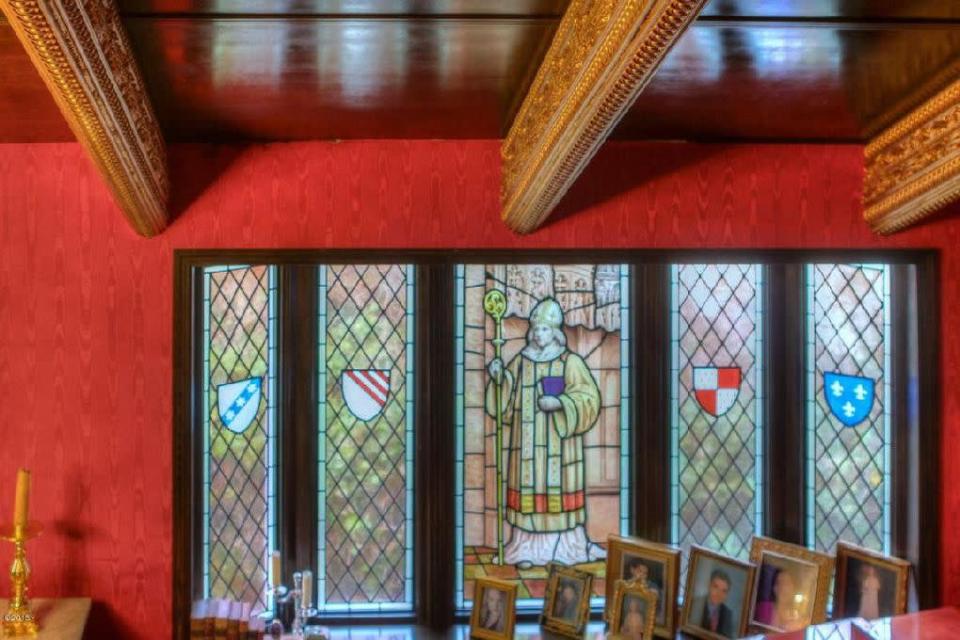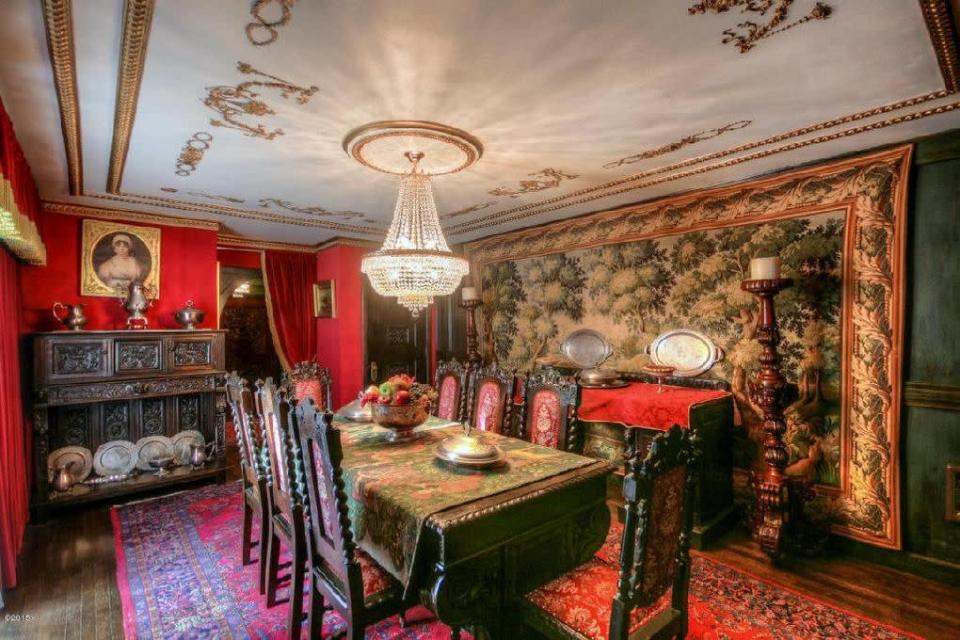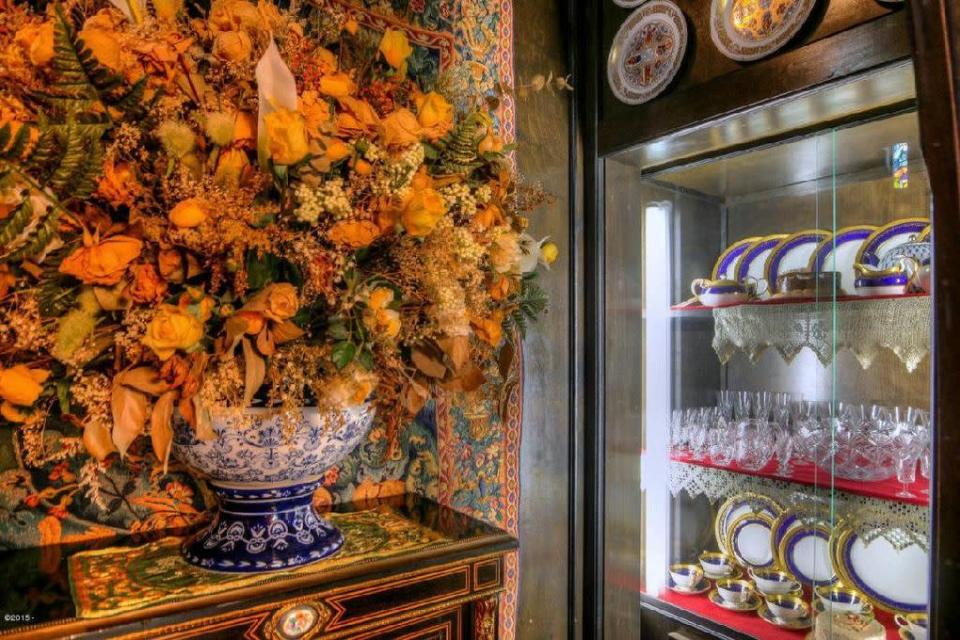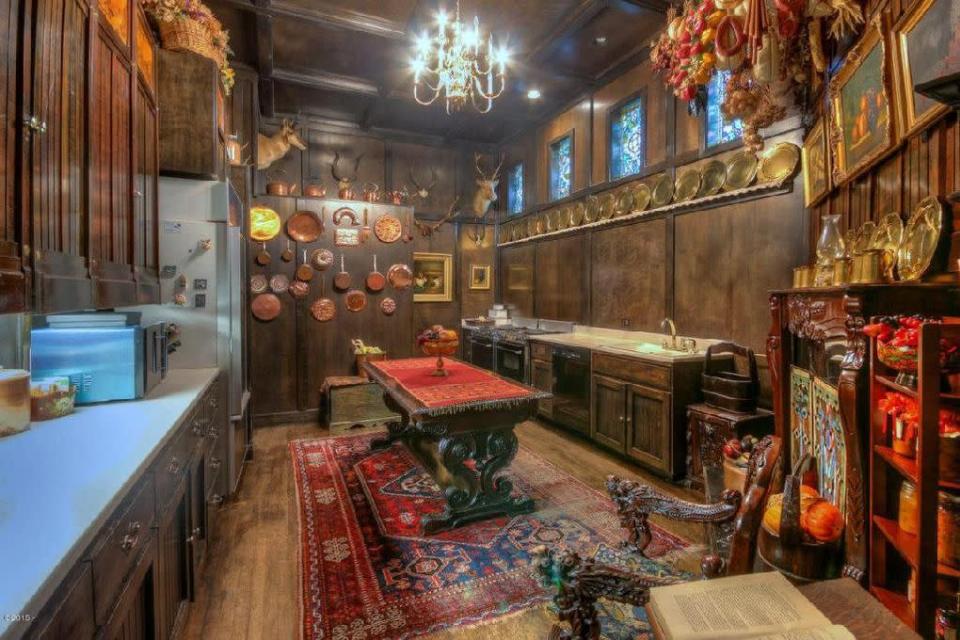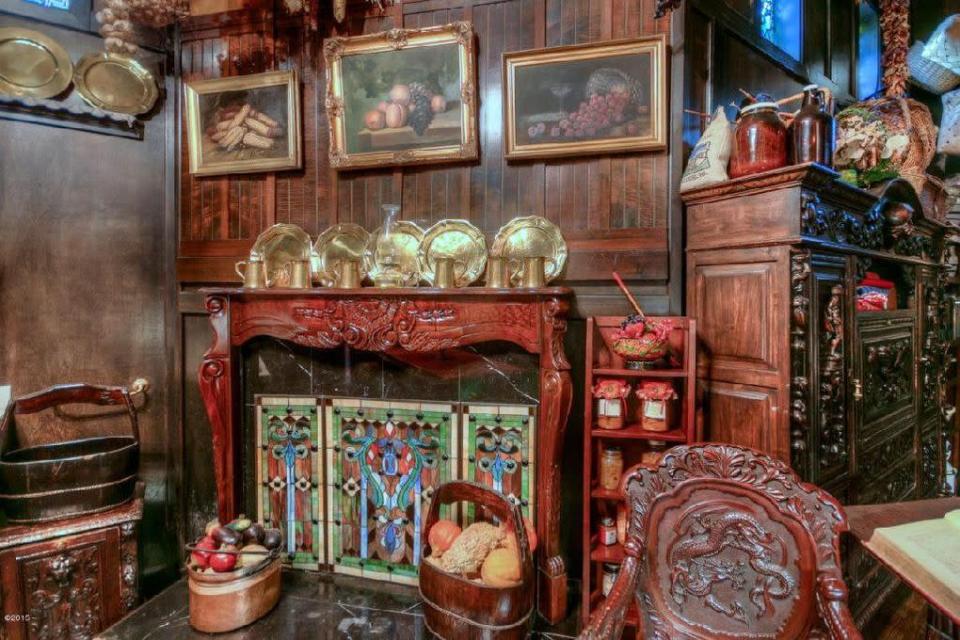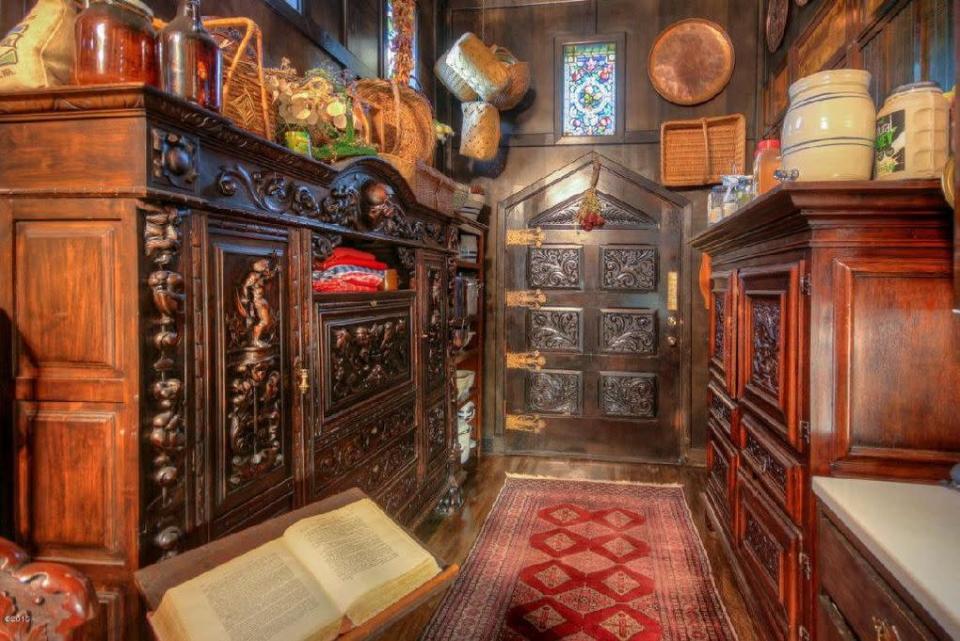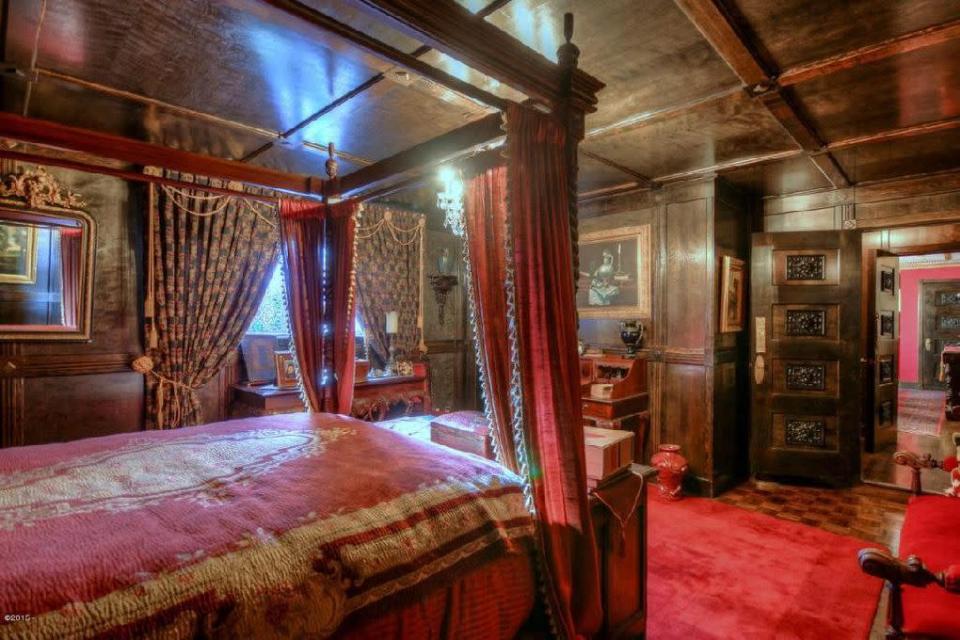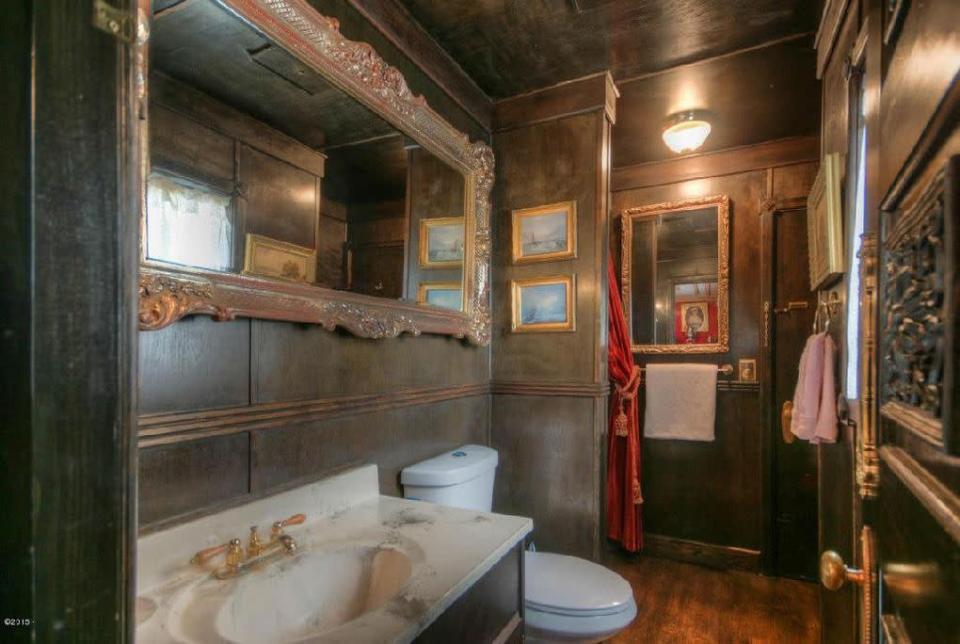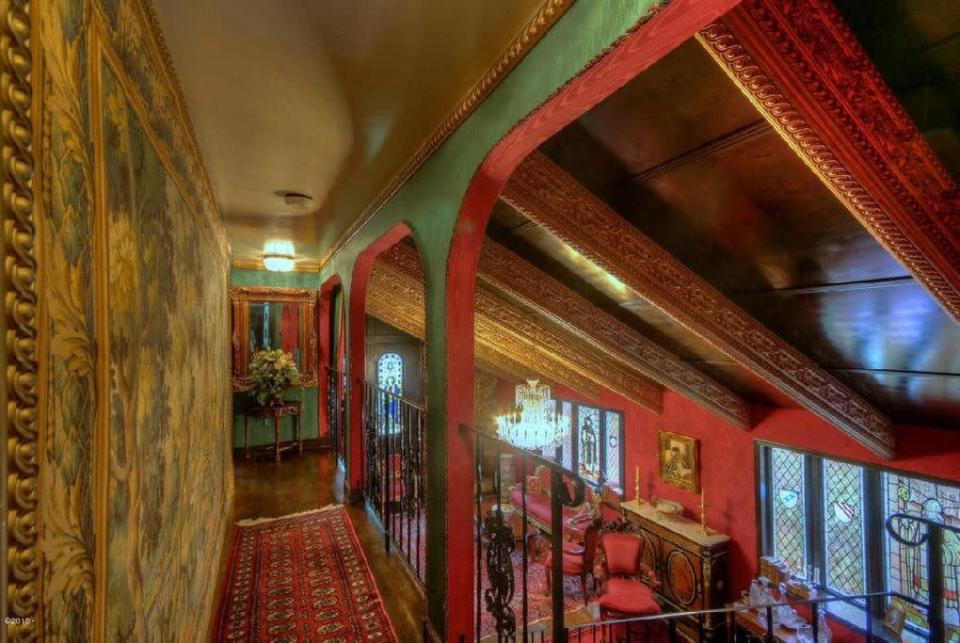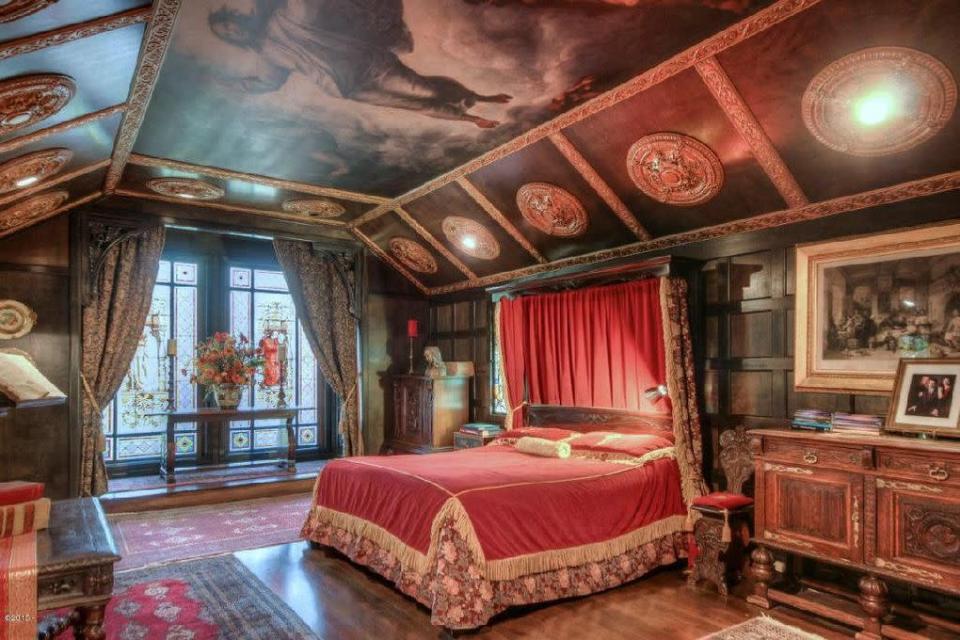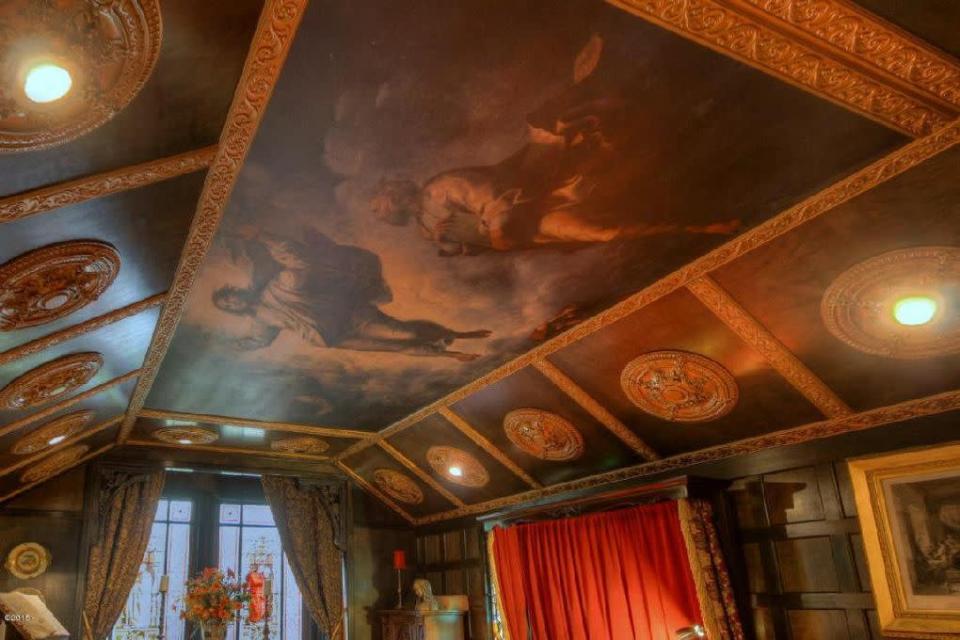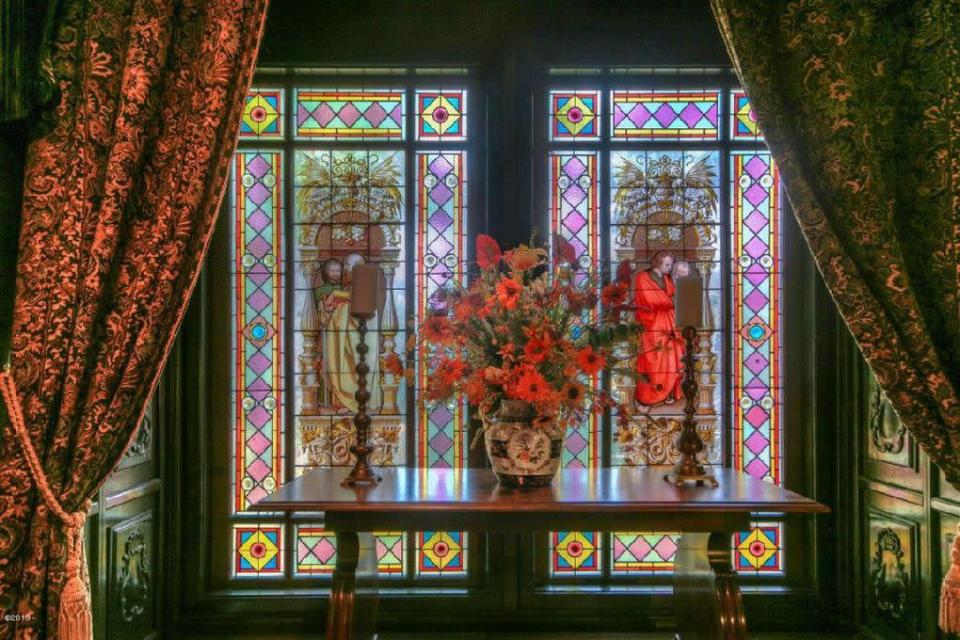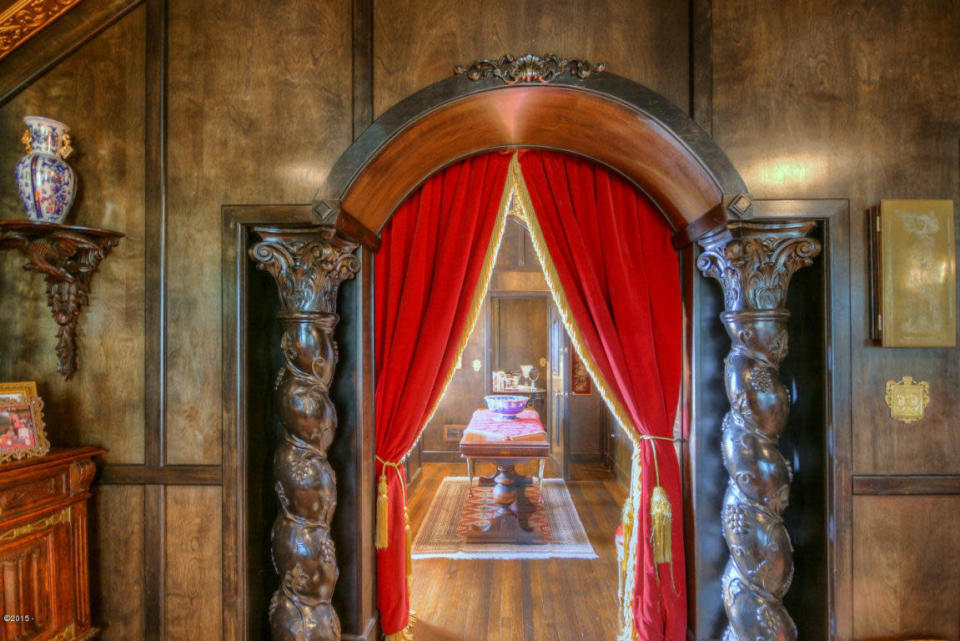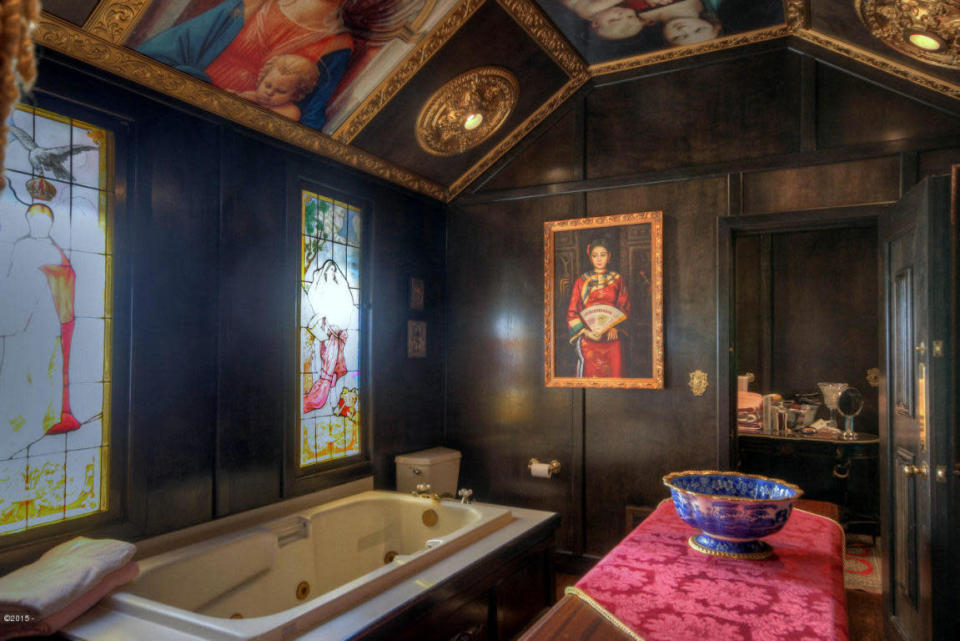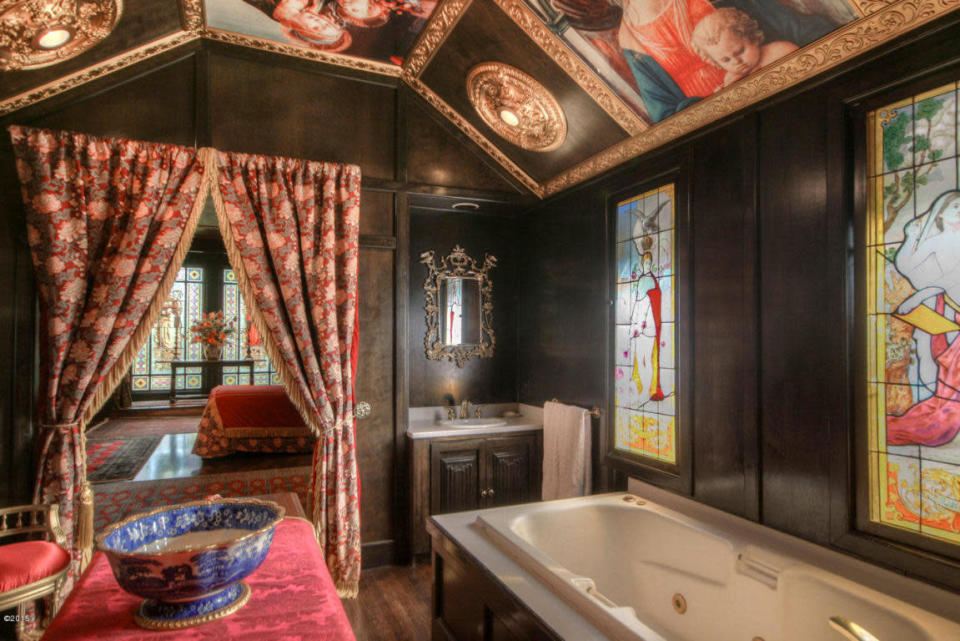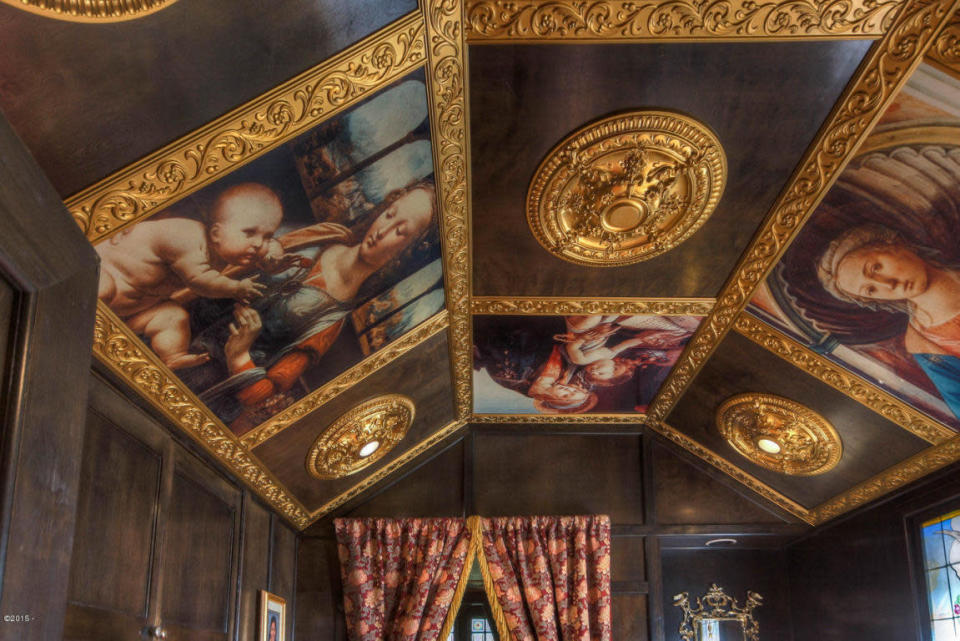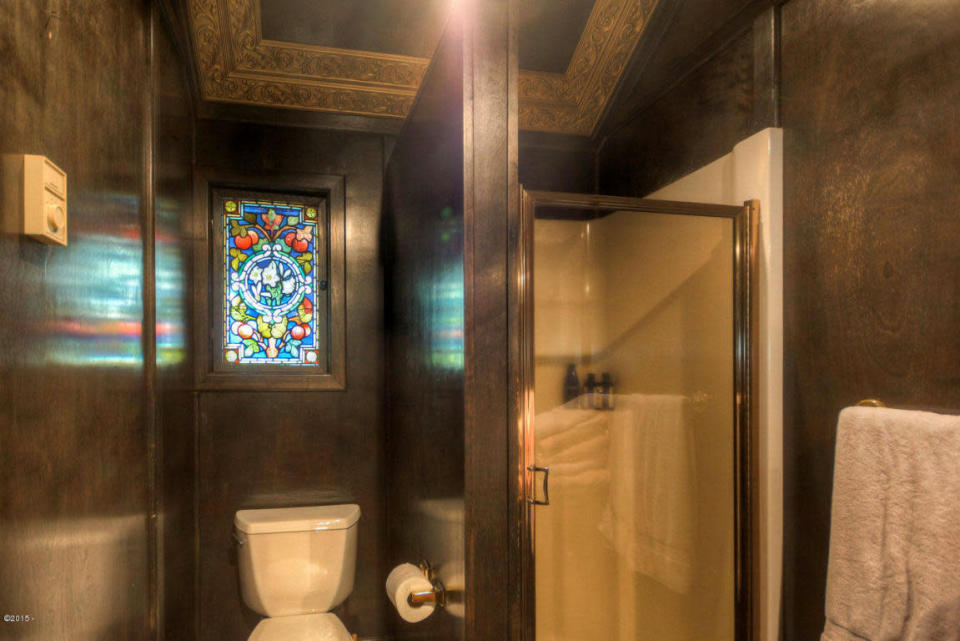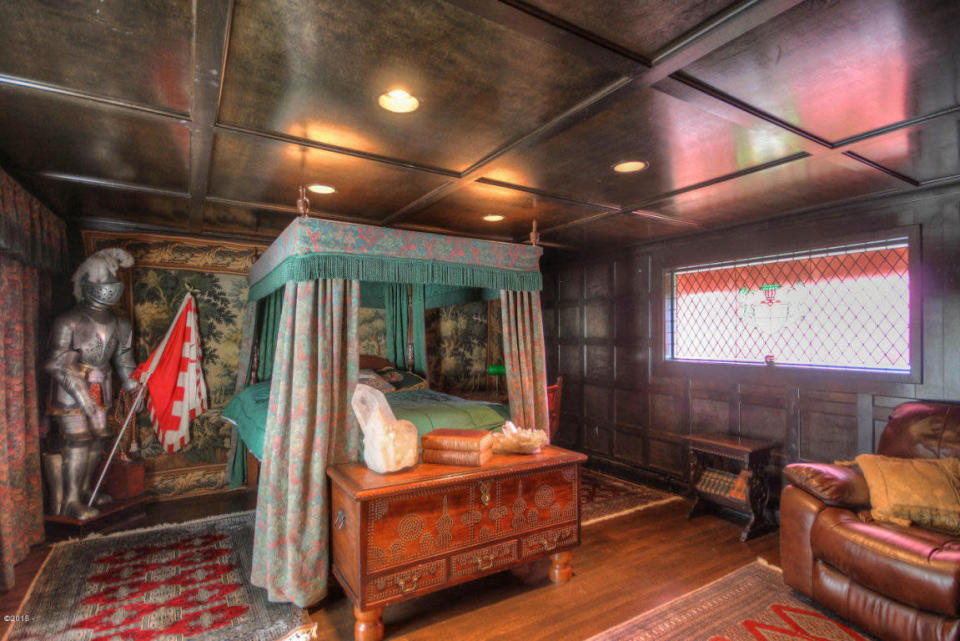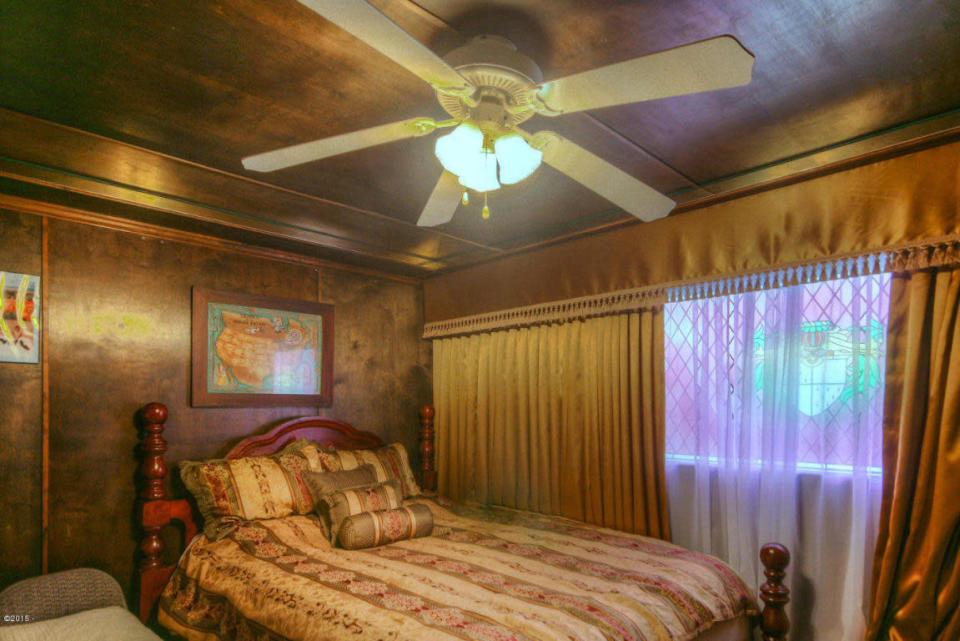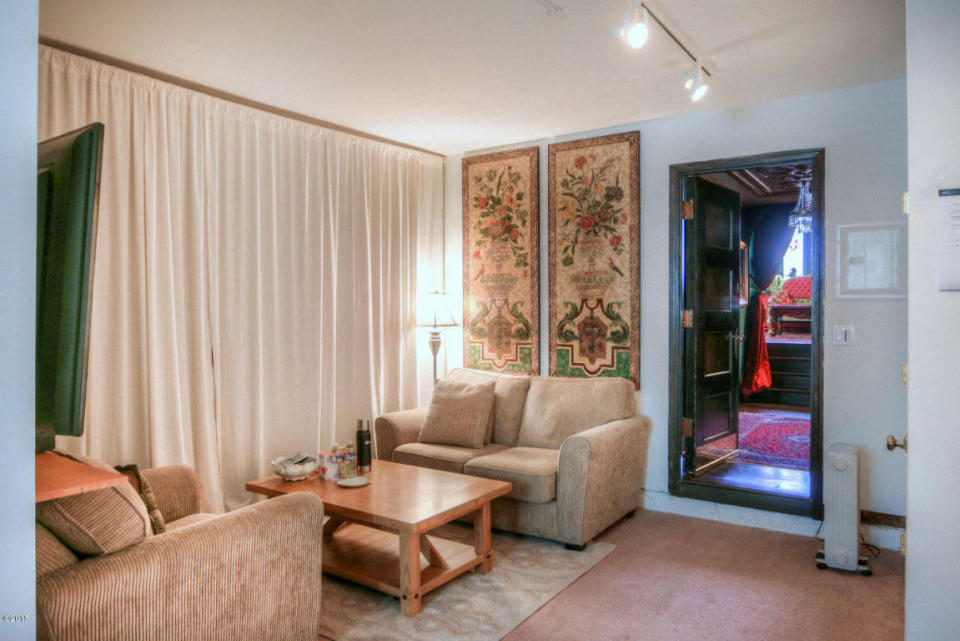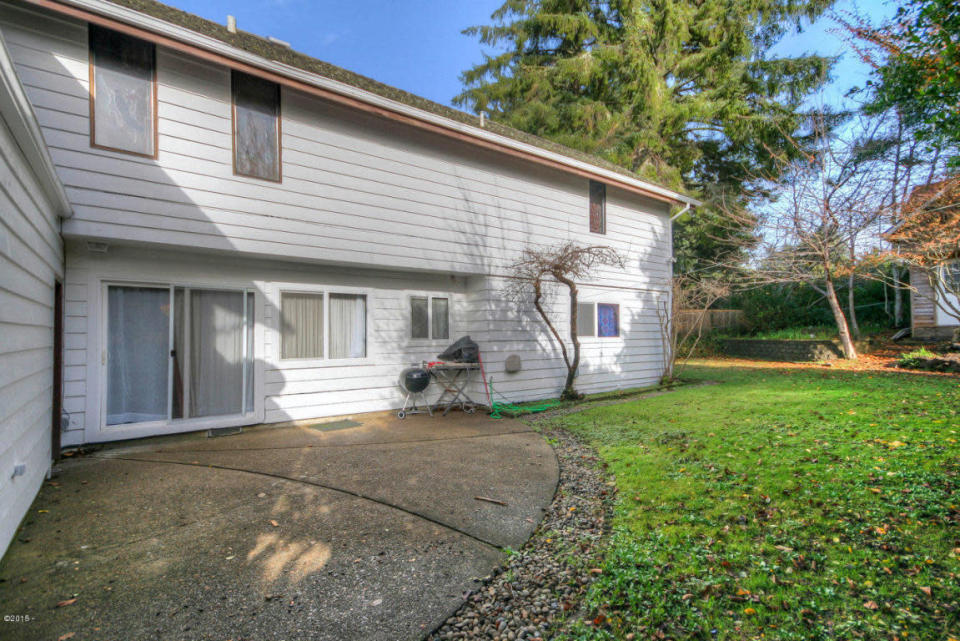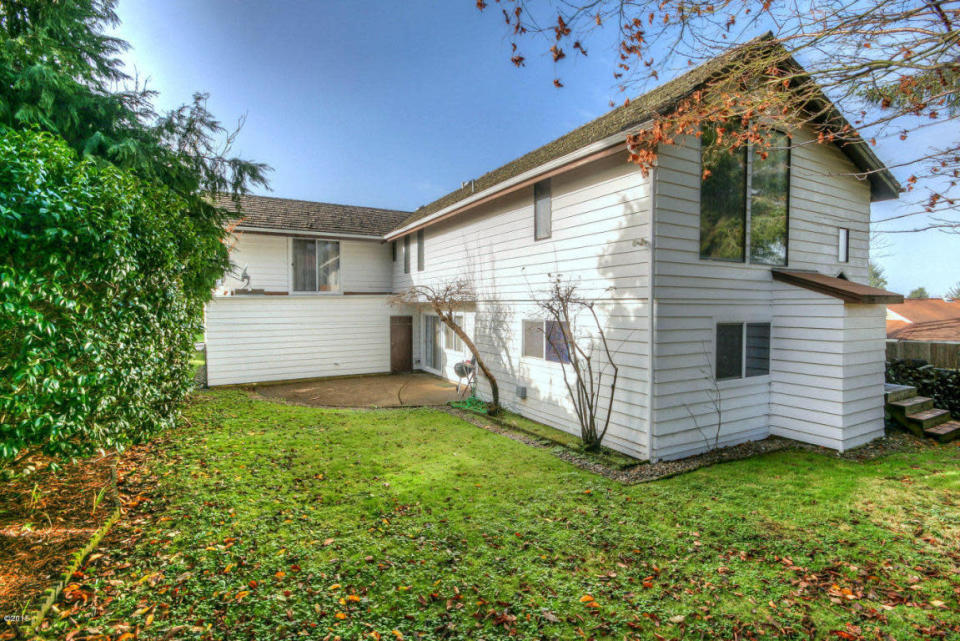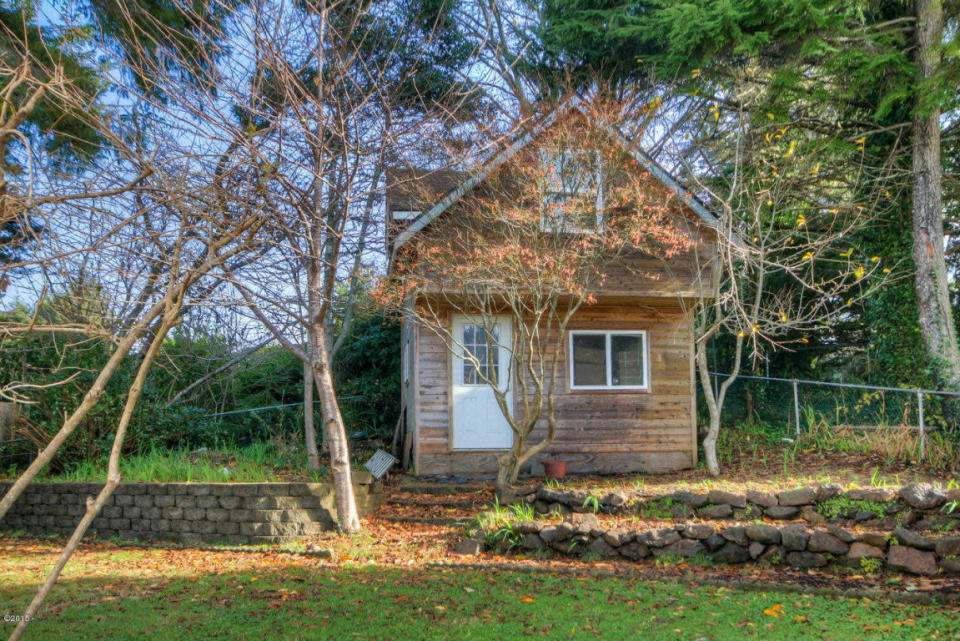Boring Facade Hides Outrageous Interior -- to Fool the Tax Man
Outside, this home is like any other in Newport, Ore., with creamy white siding, yellowed brick, and a two-car garage.
Inside, it’s a Renaissance-era castle.
Doors are thick and hand-carved. Stained-glass windows were purchased from old English churches. Some pieces date back centuries.
If it seems like this home is more fitting for British nobility than a suburban American family, you’re right. It is is owned by the Right and Honorable Dowager Countess of Shannon, Almine Barton. (She’s also a seer, spiritual master and Mystic-Visionary, according to her website.)
The difference between exterior and interior is so total, sudden, and striking that it’s hard to believe it’s the same house. But there’s a very good reason for the secrecy behind the home’s boring façade: taxes.
The home has undergone significant, and unique, additions since Barton moved in. She didn’t want her tax bill to go up – and honestly, your average Oregon assessor might have had a hard time assigning value to the changes anyway – so she simply left the exterior unchanged and never let the tax man through the door.
That, and security, of course.
Barton bought the property from the original owner in 1979. Now she has put it on the market for $399,000.
“It was an ordinary suburban house,” Barton tells Yahoo Real Estate. “The owner built it with just basic materials in a very, very sturdy way. But when I went in and saw the small little space, it just didn’t feel right to me.”
The large living room was divided into three smaller rooms that featured shag carpets, and the kitchen was small, with a tiny island in the middle.
So she began knocking down walls, creating a large front foyer that opens up into a grand red living room with gilded beams on the ceiling and milled oak floors finished with a special Jacobean brown stain. A formal dining room connects to the other side of the dark green foyer, and a dark, wood-clad kitchen sits in the back, hidden from the rest of the home.
“One of the first things you might notice is that the house looks reasonably dark inside,” she acknowledges. “Normally American houses aim for light. But there’s a reason for that. We have 18th-century stained glass in many of the windows, and just like in a cathedral, the darker interior makes these windows light up like gems throughout the day. As the light changes, the windows change.
“It’s like living inside a Rembrandt painting.”
One bedroom is on the first floor. Two more – the “knight’s room,” with a suit of armor, and the master, with a fresco of Jesus on the ceiling – are upstairs.
It’s an insanely impressive home, one that Barton crafted especially for herself, relying on construction methods so precise she frequently had to teach the local craftsmen how to perform them.
Some of the craftsmen were even afraid of damaging the raw materials: Barton found the perfect Schumacher fabrics from France for $150 a yard, and had to search for months to find someone willing to mount them to the walls. “They were scared to mess it up because of the costliness of the fabric. The man that hung that wallpaper used to come in drunk every day because he was nervous of messing it up,” she says with a chuckle.
Barton is a world traveler, lecturing and creating artwork based on light play. Before she had a stroke two years ago, she would quite literally travel around the world — sometimes twice in a year, to speak with various groups.
So what brought her all the way to Oregon in the first place? Born in South Africa to a member of the South African Parliament, she came to Oregon after her father died. “It was sort of like my life fell apart,” she says. “I came to the States because my brother was a physical therapist at a hospital in Oregon; then I got married and raised three children.”
But she says that “the more I traveled, the more I realized what an absolute gem it was to raise children in this little town of Newport, Oregon. Three blocks you can walk down to these pristine white beaches. It’s a safe little town and people are friendly. If you forget your wallet somewhere, they say, ‘Come back and pay me next time.’”
She is now raising an adopted daughter who is about to turn 17, and she’s looking to downsize to a smaller home that’s a little more manageable after her stroke. But it’s hard to say goodbye to the house it took her 40 years to carefully design, curate and craft.
“I’m embarrassed to say I feel somewhat sentimental about it,” Barton says. “The artistry in it … the curtain that matches the rugs that matches the upholstery.”
She is willing to throw in these details — the furniture, the carpets, the curtains — for a little extra to a buyer interested in them.
“I’ll work with somebody who can see what I’m seeing in terms of the value, who wouldn’t tear it all apart and sell it piece by piece,” she says.
At $399,000, the home’s price is about average for its size in the area, according to Zillow’s and Redfin’s recent sales records.
“In Portland, that will hardly even buy a condo,” she says.
It certainly won’t buy a trip through time the minute you walk through the door.
